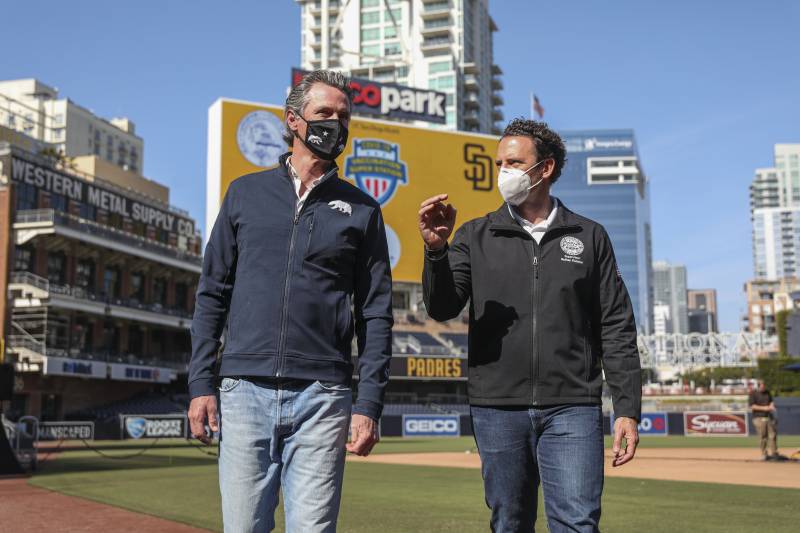California is not receiving nearly enough COVID-19 vaccine to meet overwhelming demand, and that won't change in the near term, Gov. Gavin Newsom conceded Monday.
About 800,000 Californians are fully immunized now but millions of others who are eligible have yet to get their first doses. Newsom said the state received just over 1 million doses of vaccine last week and the next weekly shipment will be only slightly larger.
“We need to see that ramped up," Newsom said during a news conference at San Diego's Petco Park, which is serving as a mass vaccination center. “We’re going to need to see more doses coming into the state of California in order to keep these mass sites operational and to keep things moving.”
Newsom commended San Diego Mayor Todd Gloria for establishing the stadium as California's first "vaccine super station," a collaboration between the state, county and UC San Diego.
San Diego County has four mass vaccination sites and, with its other facilities, could vaccinate 20,000 people a day. But it’s doing half that because of supply shortages.
